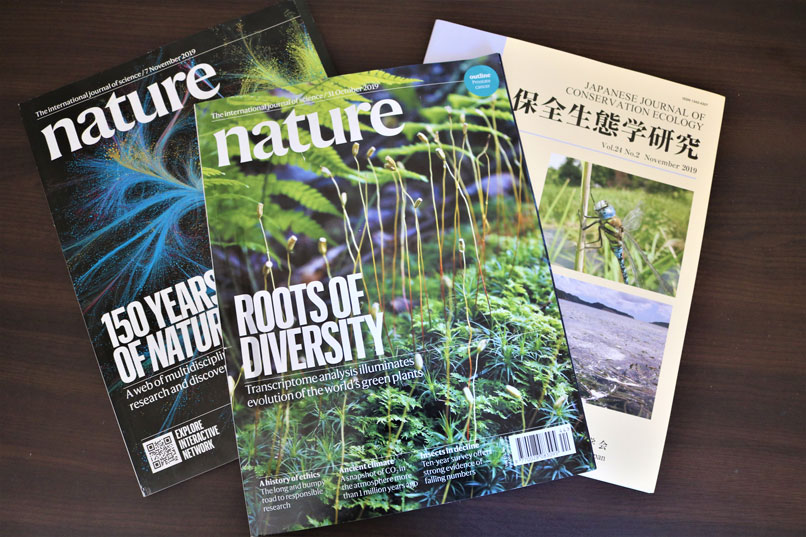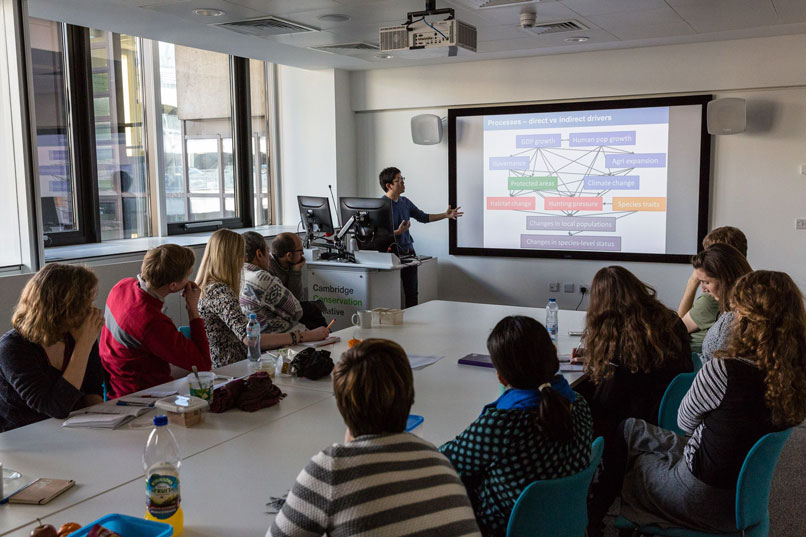Background
The challenges of the 21st century—including the conservation of global biodiversity—can only be addressed with a solid base of scientific evidence. However, two types of gaps in the process of information use have hampered the contribution of science to halting global biodiversity loss: severe gaps in available information e.g., over space, time, taxa and data types, and the research-implementation gap, i.e., scientific knowledge not being used effectively in policies and practices.
A number of barriers have been identified as factors creating these gaps in scientific information use, yet there is an important driver that has almost completely been overlooked – language barriers. English plays an irreplaceable role as a lingua franca in global scientific communication. But it is also true that most scientists and users of scientific information whose mother tongue is not English also continue to produce knowledge and communicate it in languages other than English. Thus, language has the potential to critically limit the transfer of knowledge in environmental sciences in two directions: (1) when compiling scientific knowledge globally, as language barriers create gaps in information made available internationally, and (2) when applying knowledge to local environmental issues, through the research-implementation gap.
Moreover, needless to say, language barriers continue to pose severe disadvantages for non-native English speakers pursuing academic careers. As a result, the untapped potential of non-native English speakers in contributing to tackling global challenges like the biodiversity crisis, climate change, and pandemics, cannot be realised.
What we do
The translatE project applies scientific approaches to address language barriers in environmental sciences, with the aim of maximising scientific contribution to global biodiversity conservation. More specifically, the project aims to achieve the following objectives:
- Language barriers to the global compilation of scientific information on biodiversity conservation.
- Investigating the use of non-English-language scientific knowledge in environmental evidence syntheses and its consequences.
- Testing systematic biases in scientific knowledge published in different languages.
- Exploring possibilities of automated search systems to help identify important non-English-language literature.
- Language barriers to the local application of scientific knowledge on biodiversity conservation.
- Investigating the use of scientific knowledge available in different languages in local decision making.
- Understanding the impact of language barriers on the use of scientific knowledge in local decision making.
- Testing the effectiveness of machine/human translations for the uptake of scientific information.
- Language barriers to the career development of non-native English speakers.
- Quantifying multiple disadvantages faced by non-native English speakers
- Exploring different ways of addressing language barriers to academic publishing
Key findings
See the poster below summarising the findings from the translatE so far (available here):
Also see the latest presentation on findings from the project below (plenary at the 2022 Joint Conference of the Ecological Society of Australia and the Society for Conservation Biology Oceania: from 48:48):
So far we have shown:
- Only a few number of the 736 journals in biological sciences make any effort to address language barriers and support scientists and readers whose first language is not English (Arenas-Castro et al. 2024. Proc R Soc B)
- Chinese-language nature documentaries provide unique information on biodiversity and ecosystems in China, highlighting their role in raising conservation awareness in China and worldwide (Wei et al. 2024. Biological Conservation).
- Only 38% of the 72 ecological systematic reviews/maps published in Environmental Evidence, including 58% of the 52 global-scale reviews/maps, searched literature in at least one language other than English (Hannah et al. 2024. Research Synthesis Methods).
- In the 26 systematic reviews/maps in Environmental Evidence that searched or screened at least one non-English language, non-English-language articles constitute a median 4% (range: 0 – 41.4%) of the total number of articles included (Hannah et al. 2024. Research Synthesis Methods).
- Systematic literature reviews/maps with larger author teams, authors from diverse countries, especially those with non-English primary languages, and teams with multilingual capabilities searched in a greater number of non-English languages (Hannah et al. 2024. Research Synthesis Methods).
- Non-native English speakers need up to twice as much time to read and write papers and prepare presentations in English (Amano et al. 2023. PLOS Biology).
- Papers written by non-native English speakers are 2.5 times more likely to be rejected and 12.5 times more likely to receive a request for revision, simply due to the written English (Amano et al. 2023. PLOS Biology).
- 30% of non-native English speakers often decide not to attend a conference, and half of them often decided not to give an oral presentation, just because they are not confident in communication in English (Amano et al. 2023. PLOS Biology).
- A quarter of authors of biodiversity conservation reports in 37 countries where English is not an official language struggled with understanding English-language literature (Amano et al. 2023. Nature Sustainability).
- Non-English-language literature constituted 65% of the references cited in biodiversity conservation reports in 37 countries where English is not an official language (Amano et al. 2023. Nature Sustainability).
- Artificial intelligence (AI) tools like ChatGPT and DeepL can provide cost-effective English proofreading and so help alleviate linguistic disparities and improve equity in science (Berdejo-Espinola & Amano 2023. Science).
- Academic journals and publishers have made little progress towards beginning to recognize or reduce language barriers (Nolde-Lopez et al. 2023. Integrative Organismal Biology).
- 345 non-English-language studies (in Spanish, Japanese, simplified Chinese, or traditional Chinese), compared to 581 English-langauge studies, provide information on butterfly migration (Chowdhury et al. 2022. Integrative Conservation).
- 27 non-English-language studies (in Portuguese, Spanish, simplified Chinese, or traditional Chinese), compared to 186 English-language studies, provide data on amphibian heat tolerance (Pottier et al. 2022. Scientific Data).
- A large number of languages are spoken within the distribution of each bird species, e.g., 1,587 bird species have 10 languages or more spoken within their distributions (Negret et al. 2022. PLOS ONE).
- The number of non-English-language articles on conservation published per year is increasing, at a rate similar to English-language articles (Chowdhury et al. 2022. Conservation Biology)
- A potential solution to overcoming language barriers in science through developing a platform for facilitating the exchange of language skills among researchers (Khelifa et al. 2021. Trends in Ecology & Evolution)
- 1,234 non-English-language studies provide evidence on the effectiveness of biodiversity conservation interventions (Amano et al. 2021. PLOS Biology)
- Non-Egnlish-language studies providing evidence on the effectiveness of conservaiton interventions are being published at an increasing rate (Amano et al. 2021. PLOS Biology)
- Incorporating non-English-language studies can expand the availability of evidence for conservation into 12-25% more areas and 5-32% more species (Amano et al. 2021. PLOS Biology)
- Non-English-language studies tend to be based on less robust study designs, compared to English-language studies (Amano et al. 2021. PLOS Biology)
- Ten practical tips for overcoming language barriers in science (Amano et al. 2021. Nature Human Behaviour)
- Only 3.4% of the references cited in the IPBES biodiversity assessments were non-English-language studies (Lynch et al. 2021. One Earth)
- Comments from Anglophone reviewers were overrepresented in the IPBES biodiversity assessments (Lynch et al. 2021. One Earth)
- Why monolingual literature searches can limit and bias results in global literature reviews (Nuñez & Amano 2021. Nature Ecology & Evolution)
- Ignoring studies published in languages other than English can bias outcomes of ecological meta-analyses (Konno et al. 2020. Ecology and Evolution)
- Up to 36% of conservation-related scientific documents are published in non-English languages (Amano et al. 2016. PLOS Biology)
- Fewer records are stored in global biodiversity databases for countries where English is not widely spoken (Amano & Sutherland 2013. Proc R Soc B).
- 54% of protected area directors in Spain found language as a barrier to the use of scientific papers for their management (Amano et al. 2016. PLOS Biology)
For more detail see Publications.




